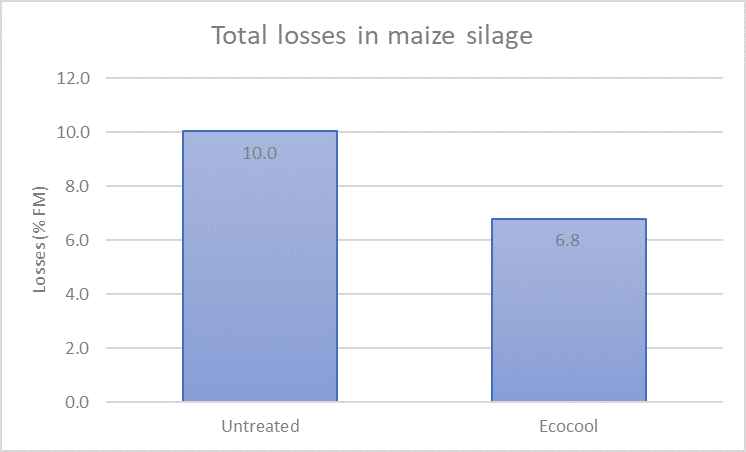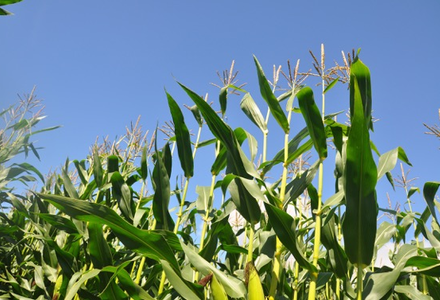How to make good maize silage to fill grass silage shortfalls
02 September 2020
Reduced grass silage yields in the first half of the year are set to make producing good maize silage even more important this season. So how do you achieve the best maize preservation?
There are at least three reasons why preserving plenty of good maize silage will be even more important this season, says Volac silage specialist, Ken Stroud.
_original.jpg?1593609099)
-
Reduced amounts of grass silage made during the dry spring
-
Reduced grass for grazing during spring, meaning some farms had to ‘dip into’ grass clamps to buffer feed
-
Silage alternatives such as brewer’s grains have been in short supply
“All these factors point to it being vital to leave no stone unturned to conserve as much dry matter (DM) and nutrient content as possible from this year’s maize crops,” stresses Mr Stroud.
“Even in a normal situation, bought-in feeds can account for up to half the overall costs of production on high input dairy farms. If silage stocks are tight, requiring extra bought-in feed, that figure will obviously increase.
Theoretically, there is enough energy in a hectare of fresh forage maize to support about 30,000 litres of milk production, assuming animal maintenance needs are already met. However, there is only one opportunity to conserve maize correctly.
Actions taken on the day of ensiling have long-term consequences for how well the resulting maize silage will keep through the winter, and how much will be lost.
Potential losses: How much loss is at stake in maize?
“Putting a precise figure on this is difficult,” admits Mr Stroud. “But figures can be 15% or even more of the dry matter (DM) ensiled.
“Losses are caused by inefficient fermentation and heating (aerobic spoilage) due to the growth of undesirable micro-organisms.
But it is not just quantity that suffers. Feed value is also lost as the micro-organisms feed on the silage’s nutrients. Spoiled silage is also less palatable, leading to waste from cows rejecting it, and can contain mycotoxins.
Reducing losses in maize silage
So what can be done? To preserve maximum maize quantity and quality, Mr Stroud points to five steps in Cut to Clamp – an initiative designed to provide a blueprint for consistently better silage:
1. Planning
The importance of planning ahead cannot be underestimated, stresses Mr Stroud.
He says: “A key aim of planning is to take steps to minimise undesirable micro-organisms growing in the silage from the outset and to maximise the good micro-organisms.
This can be done directly. For example, clean the clamp of last year’s silage thoroughly to reduce mould spores. Also, ensure you have enough of the correct type of additive: a dual-acting one designed to improve fermentation and inhibit yeast and moulds.
“However, it also includes other best practices. For example, line clamp walls with polythene, which is a better barrier against air than bare concrete. This is important because airtight conditions both aid fermentation and reduce yeast and mould activity.
“The other aim of planning ahead is to get yourself into a position so the crop will be harvested in peak condition – both nutritionally and for ensiling.”
2. Harvesting
Maize should be harvested when the whole plant reaches a sweet spot of 30-33% DM, says Mr Stroud. This is essential for two reasons. Firstly, harvest too early and starch in the cobs is not fully formed. Secondly, harvest too late, when the crop is drier, and it becomes more difficult to consolidate in the clamp, increasing the risk of losses from heating.
Monitoring maize crops regularly, so you can keep your contractor informed as the optimum % DM approaches, will be particularly important this year. Otherwise, if you call them on the last minute and they cannot get to you immediately, you risk crops becoming over-ripe.
“Remember also that modern maize varieties stay green, so may be ready to harvest before they look like it. To asses % DM, you have to examine the cobs.
To do this, Mr Stroud says collect at least 10 consecutive cobs along a row and press your thumbnail into the exposed kernels. When ready to harvest, this should leave no indentation in kernels at the bottom of the cob but show a soft cheese texture in kernels at the top.
Additionally, break cobs in half and check for a visible line where the milky white sugar portion in the kernels changes to solid yellow starch. When ready to harvest, one-third to one-half of the kernel should be yellow starch.
He continues: “Other important steps to aid maize preservation are to ensure the crop is cut at the correct height and chopped to the correct length.
If looking to make up for silage shortfalls it can be tempting to cut a bit lower. But the base of the stem is low in nutritional value and risks contaminating the clamp with soil and mould spores. Always leave at least 15 cm of stubble.
“Also at harvest, consider a chop length of 1.5–2 cm to aid consolidation, but avoid chopping too short as this will compromise how the silage performs in the rumen,” he adds.
3. Treating
Whenever silage is made, it is at the mercy of micro-organisms, says Mr Stroud.
By treating, you take greater control of these microbial processes.
“There is an argument that greener, more moist maize needs extra help with fermentation, while in more mature maize, yeast and mould levels increase.
By using a dual-purpose additive you are covering both issues. Ecocool, for example, applies two strains of beneficial bacteria – one to produce a rapid fermentation, and one that inhibits yeast and mould growth.
Scientific studies have shown clear reductions in losses of maize silage fresh weight by treating with Ecocool (see below). In other work, while the temperature of untreated silage rose by 8oC after two days, Ecocool-treated silage remained cool for more than 10 days.
Latest maize preservation research
Latest findings from three years of trials have revealed that, compared with leaving silage untreated, treating with Ecocool at ensiling slashed total fresh weight losses in maize (from fermentation plus aerobic spoilage) by around a third.

“In this case, preservation of fresh weight was measured, rather than preservation of DM,” says Mr Stroud. “Nevertheless, the work underlines an important principle: treating would have resulted in more material to feed.”
Find out more about the benefits of using Ecocool and download the product brochure today. We are currently Buy 10 Get 1 Free on Ecocool*, so place your order today to take advantage of this offer!
_original.jpg?1599023155)
*Offer ends 4th September 2020
4. Clamping
Maize preservation can go badly wrong during clamping, says Mr Stroud, because there is pressure to finish the job quickly.
However, this is a crucial step, so take the time to consolidate and seal the clamp correctly, he urges, to create and maintain airtight conditions.
“Maize needs consolidating to a density of 700 kg of fresh weight per cubic metre. Do not underestimate how much weight is needed to achieve this. Two, 14-tonne tractors rolling continuously would not be enough with a typical harvest rate of 120 tonnes per hour.
“To aid consolidation, fill clamps in layers no more than 15cm deep, which is the most that can be consolidated effectively. And fill in horizontal layers rather in a wedge, which is more difficult to compact.
For sealing, start with an oxygen barrier film on top of the maize. Fold the side sheets over the top allowing a minimum 1-2 metre overlap, followed by a top sheet pulled tight, then a woven sheet to protect against damage. Weight with mats, gravel bags, touching tyres or bales. Finally, place a net over the top to prevent birds pecking through, and control rodents,” he adds.
5. Feeding
Having gone to the trouble of conserving good maize silage, do not allow losses and wastage at feed-out, says Mr Stroud.
He advises: “Minimise the amount of air that can get into the open face by keeping the face smooth using a block cutter or shear grab and moving across the clamp quickly so that each newly-created face is exposed to air for the minimum time.
In addition, do not pull the top sheet back over the face as this creates a warm, humid environment that yeasts thrive in. And remove old silage that falls off the face promptly. Otherwise, it becomes a source of mould spores.
For more advice and the latest top tips, download our handy maize guide today to help you get the most from this valuable forage.

